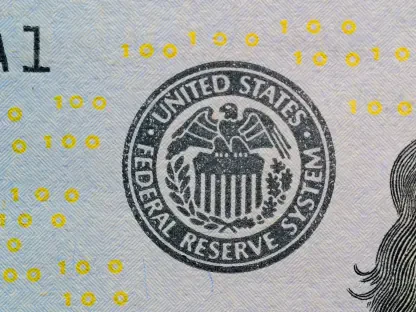Choosing a crypto exchange shaped every early trade, fee, and security decision a beginner made, and that single choice often determined whether curiosity evolved into confidence or stalled in frustration. The first platform defined the learning curve: how easily funds were deposited, whether price charts made sense, how quickly orders executed, and what guardrails protected assets when markets turned wild. Beyond convenience, the stakes were higher than they first appeared, since exchanges differed widely in insurance, Proof of Reserves disclosures, customer support, and regional compliance. For a newcomer, the right balance was usually a clean interface with transparent fees, a decent coin list, and rock-solid safety—plus the peace of mind that came from a platform with a credible track record and clear disclosures about custody and controls.
Yet simplicity alone did not settle the matter, because preferences diverged fast as beginners explored. Some wanted a “buy and hold” path with fiat on-ramps, while others leaned toward learning order types, experimenting with dollar-cost averaging, or testing advanced modes later. Moreover, fees could erode small balances if overlooked, and a generous coin catalog sometimes invited risk rather than opportunity. The best approach started with defining goals, then matching them to an exchange’s user experience, trust score, listed assets, and security stack. Doing so turned an overwhelming market into a workable shortlist that served new traders on day one and scaled with them as skills grew.
1. Why The First Exchange Choice Matters
For a new trader, user experience sat at the center of the journey: intuitive onboarding, clear deposit paths, and guardrails that prevented accidental missteps. Exchanges varied in how they surfaced risk warnings, presented order types, and explained fees before confirmation. A beginner-friendly platform prioritized sensible defaults, readable typography, and frictionless navigation on both desktop and mobile. In parallel, helpful touches such as quick KYC verification, easy bank linking, and reliable status pages reduced anxiety. When early interactions felt smooth, confidence rose, and the focus moved to understanding markets rather than wrestling with interfaces or support queues.
Security and cost stood as the other pillars of a smart first pick. Two-factor authentication, cold storage, and published Proof of Reserves helped establish trust, while insurance programs and incident response discipline added layers of comfort. On the fee front, exchanges that posted transparent maker/taker tiers and avoided hidden spreads safeguarded newcomers from silent slippage. Supported coins mattered, too, but breadth had to be weighed against quality and liquidity. A streamlined slate of well-known assets reduced noise, while a curated selection of altcoins offered room to explore without drowning in ticker overload. The goal, ultimately, was a platform that rewarded good habits and refused to punish inexperience.
2. Top Picks Snapshot
Across leading platforms, a pattern emerged that helped beginners align needs with features. Binance, Bybit, Gate.io, Coinbase, OKX, Bitget, Kraken, MEXC, KuCoin, and Crypto.com covered most entry scenarios—ranging from clean, regulated spot trading to maximal coin variety and advanced derivatives. Trust scores reflected operational maturity, transparency standards, and security investments. Maker/taker fees framed the cost of executing trades, with some venues offering zero-fee maker tiers, volume discounts, or token-based reductions. Supported coin counts hinted at discovery potential but also implied complexity. Core security features—Proof of Reserves, cold storage, 2FA, bug bounties, insurance funds—indicated how well a venue managed downside risk.
Matching these attributes to “best-for” use cases narrowed choices fast. Coinbase excelled in beginner simplicity and compliance, Kraken in security and educational resources, and Binance in liquidity and breadth. Bybit and MEXC attracted users chasing derivatives depth or leverage, while Gate.io and KuCoin appealed to altcoin hunters. OKX and Bitget stitched robust trading toolkits to modern experiences like copy trading and Web3 access, and Crypto.com offered a strong mobile app tied to daily spending options through a crypto card. The practical filter remained consistent: favor platforms with clear fee tables, credible reserves reporting, responsive support, and onboarding that respected a beginner’s learning curve.
3. The 10 Best Crypto Exchanges (Expert Reviews)
Binance stood out for expansive coverage and deep liquidity across spot, margin, futures, and options, pairing low baseline fees with vast trading pairs. For a beginner, that meant tight spreads and fast fills, although the interface could feel busy. SAFU and two-factor authentication were table stakes here, while liquidity ensured prices tracked global discovery. Bybit delivered a crisp interface married to powerful derivatives up to 100x, with staking and copy trading for passive or assisted strategies. Its engine handled heavy loads smoothly, yet regional restrictions and fewer spot pairs limited utility in some markets, making jurisdiction and asset needs essential considerations.
Gate.io catered to altcoin explorers with an enormous token roster and early-project access, complemented by staking, liquidity mining, and a Web3 wallet for decentralized engagement. Its breadth demanded discipline, as discovery came with volatility and occasional thin liquidity on small caps. Coinbase emphasized a regulated, beginner-first experience, deep spot liquidity, and an elegant mobile app, with advanced APIs and a regulated derivatives arm for growth. Fees trended higher than some peers, and the altcoin list was more curated by design. OKX offered low fees, bots, copy trading, and a full Web3 suite—from a non-custodial wallet to an NFT marketplace—suited to users who wanted both centralized reliability and decentralized experimentation.
Bitget blended a smooth app with standout copy trading, giving novices a way to mirror veteran strategies under a transparent risk framework, while a Protection Fund and Proof of Reserves supported trust. Kraken balanced entry-level clarity with pro features on Kraken Pro, including margin and futures, and consistently ranked high on security. MEXC tilted toward extreme leverage, zero maker fees on spot, and frequent listings; it was compelling for cost-conscious or advanced users but asked beginners to tread carefully with leverage and small-cap liquidity. KuCoin specialized in early listings, bots, and flexible earn products, rewarding engaged users who learned its toolset. Crypto.com rounded out the list with a polished app, low maker fees, staking yields, and a rewards card, backed by 1:1 reserves and notable insurance—an appealing mix for those who wanted trading plus everyday utility.
4. What Is A Crypto Exchange?
A crypto exchange functioned as a marketplace where digital assets such as Bitcoin, Ethereum, and stablecoins were bought, sold, and swapped, often with fiat on-ramps and off-ramps that connected bank accounts to wallets. At its core, an exchange matched orders between buyers and sellers, set prices through supply and demand, and provided tools to visualize markets. Features like order books, charts, and depth data guided informed decisions, while custody options housed assets either in hot wallets for liquidity or in cold storage for security. For beginners, the key was a platform that explained these mechanics clearly and surfaced risk disclosures before funds moved.
Beyond basic trading, exchanges layered services to support different styles. Staking, earn programs, and automated strategies allowed users to put idle balances to work, though terms and risks varied widely. APIs powered integrations and third-party tooling, enabling portfolio trackers and bots. Compliance guardrails—KYC, AML checks, and jurisdictional controls—protected the platform’s legal standing, while transparency tools like Proof of Reserves helped users assess solvency posture. Understanding these dimensions turned “what is an exchange” from a vague idea into a practical checklist: fees, security, supported assets, trust signals, and usability formed a framework to evaluate whether a venue was suitable for first steps.
5. Types Of Crypto Exchanges
Centralized exchanges (CEXs) were run by companies that handled order matching, custody, and support. For newcomers, the appeal was obvious: clean interfaces, fiat rails, and a service desk if something went wrong. CEXs implemented KYC and AML programs, offered insurance or protection funds, and often maintained substantial cold storage. This model demanded trust in the operator but delivered speed, deep liquidity, and a familiar feel. In contrast, decentralized exchanges (DEXs) executed swaps through smart contracts, letting users keep their own keys. While privacy and self-custody were stronger, DEXs required managing wallets and gas fees, and slippage could be unpredictable on thin liquidity pairs.
Hybrid models attempted to reconcile both worlds, offering fast interfaces with elements of self-custody or on-chain settlement during specific operations. The goal was speed with reduced custodial risk, though implementations varied and user education remained crucial. Additional variants covered niche needs: Peer-to-Peer platforms enabled direct trades with custom payment methods; instant swap services made token-to-token conversions in seconds without full accounts; futures and derivatives venues focused on leverage and hedging; and crypto-only exchanges omitted fiat entirely. Beginners typically started with a well-established CEX, then explored DEXs or hybrids once comfortable with wallets, seed phrases, and the implications of managing private keys.
6. Broker Vs. Crypto Exchange
Brokers prioritized simplicity. They bundled price discovery, spread, and execution into a “buy now” flow that felt familiar to anyone who had purchased stocks or ETFs. This suited beginners who valued minimal friction and a single balance view for multiple asset classes. However, fees were often higher, coins fewer, and direct withdrawals to self-custody sometimes limited. Exchanges, by contrast, unlocked broader coin access, granular control over order types, and generally lower trading costs, especially at volume. The trade-off was a steeper learning curve plus responsibility for security hygiene—choosing strong 2FA methods and understanding how to move assets to a personal wallet.
What exchanges typically offered mirrored that ethos: a wide catalog of altcoins, advanced trading tools such as margin or bots, and ownership of assets that could be withdrawn on-chain. With that control came accountability for safekeeping private keys when moving funds off-platform. Traditional brokers typically offered a streamlined path, integrated portfolios with equities, and a regulated setting that many found comforting, but often lacked true self-custody and imposed tighter coin menus. Beginners decided by preference: convenience and bundled protections versus control and breadth. For many, starting on a friendly exchange then adopting self-custody once comfortable struck a useful balance.
7. How To Choose The Best Crypto Exchange
The selection process worked best when tied to personal goals. If the aim was basic buying and holding, favor a platform with an intuitive interface, straightforward fiat deposits, and strong support. If the plan involved exploring altcoins or learning to trade, prioritize advanced markets, robust APIs, and educational content. Security should lead the checklist: two-factor authentication with time-based tokens, cold-storage commitments, insurance or protection funds, and, increasingly, auditable Proof of Reserves with clear liability disclosures. Fees came next—maker/taker tiers, discounts at higher volumes, and any spreads on simple “convert” features—since small accounts felt costs more acutely.
Mobile experience often made or broke daily engagement. A reliable app that supported every essential feature, from deposits to advanced orders, reduced friction and enabled quick reactions when markets moved. Trust and transparency sealed confidence. Reputation, incident history, communication during outages, and regulatory standing all informed whether a venue deserved a beginner’s business. Moreover, regional availability mattered; the best platform on paper was irrelevant if key features were blocked locally. A deliberate evaluation that weighed interface clarity, safety guarantees, total costs, app quality, and jurisdictional fit consistently produced a shortlist aligned to a newcomer’s needs today and ambitions tomorrow.
8. How To Buy Cryptocurrency (Step-By-Step)
The first move was to pick a reputable platform that matched comfort level and goals. 1) Pick a Reputable Platform: choose an exchange with a track record for uptime, clear fee schedules, and a design that made actions obvious. For newcomers, options known for simplicity and education—such as Coinbase or Kraken—set a forgiving foundation. 2) Register and Confirm Your Identity: create an account and complete KYC by submitting a government-issued ID and requested documents; this unlocked higher limits and full feature access while strengthening account security. 3) Add Money to Your Account: fund via bank transfer, card, or supported local methods, while checking deposit fees and potential processing times; users holding crypto could deposit directly to supported addresses.
With funds available, the next decisions shaped execution quality and safety. 4) Choose the Coin You Want to Purchase: review supported assets—Bitcoin, Ethereum, or select altcoins—and understand volatility and liquidity before committing. 5) Place Your Trade: set an order type (market for immediate execution or limit to target a price), confirm fees, and verify details before submission. 6) Protect Your Holdings: once settled, consider transferring assets to a secure personal wallet to minimize exchange counterparty risk; storing seed phrases safely, enabling strong 2FA, and testing small withdrawals first reinforced good security habits. Following these steps gave beginners a structured path that balanced speed, clarity, and prudent safeguards.
9. Risks Of Using A Crypto Exchange
Security incidents remained the most discussed risk. Exchanges were high-value targets, and while mainstream venues invested heavily in cold storage, access controls, and monitoring, no system was invulnerable. Users who left funds in hot wallets bore counterparty and operational risks beyond market volatility. Good platforms mitigated this with separation of duties, external audits, bug bounties, and incident communication plans. From a user perspective, enabling hardware-based 2FA, avoiding SMS codes, practicing phishing awareness, and regularly reviewing withdrawal whitelists materially reduced exposure. When in doubt, self-custody with a reputable wallet and disciplined key management limited blast radius from exchange-level issues.
Regulatory uncertainty posed a different category of risk. Rules shifted by region, affecting which products could be offered and sometimes restricting service altogether. Platforms responded with geo-fencing, compliance upgrades, or product adjustments, but users still faced potential disruptions. Liquidity on small-cap pairs could dry up without warning, magnifying slippage. Leverage amplified losses for those unprepared for swings. Fee opacity on “instant convert” flows occasionally hid costs. The practical response was to pick exchanges with strong compliance records, diversify venue usage when holdings grew, favor liquid markets for meaningful size, and keep an eye on official announcements to anticipate changes before they became urgent.
10. Practical Next Steps And Final Takeaways
The right beginner exchange decision hinged on aligning needs with design choices, security posture, fees, and coin availability, then testing those assumptions with a small initial deposit. Starting where onboarding felt clear and support proved reachable had reduced early friction, while published Proof of Reserves and mature cold storage policies had added assurance. As comfort grew, users had layered in features—recurring buys, limit orders, and eventually earn or staking options if risks were acceptable. Those who prioritized a mobile-first workflow had confirmed that app parity with desktop existed for deposits, withdrawals, and order management before relying on it during busy market windows.
Over time, best practices had guided safer habits. Funds not actively traded had been moved to self-custody, two-factor authentication had been upgraded to hardware keys, and transaction alerts had been enabled to catch anomalies early. Fee literacy had sharpened execution, and liquidity awareness had prevented costly slippage on thin pairs. When needs changed—more altcoin discovery, derivatives access, or integrated DeFi—platforms like Binance, Bybit, Gate.io, OKX, Bitget, KuCoin, and MEXC had been evaluated on features and jurisdictional fit, while Coinbase, Kraken, and Crypto.com had remained dependable for simplicity, security, or everyday utility. A measured, goal-driven approach had delivered confidence without sacrificing caution.
11. FAQs That New Traders Asked First
What is the best crypto exchange in 2025? It depended on needs. For overall coverage and advanced tooling, Binance and Coinbase stood out; Binance for depth and low fees, Coinbase for simplicity and regulatory clarity. Which exchange is best for beginners? Coinbase offered an intuitive interface, helpful education, and strong compliance; Kraken was another trusted option with excellent security and a clear path to advanced tools via Kraken Pro. Which exchange was the safest and most trusted? Kraken consistently ranked high for security discipline and transparency, while Coinbase also rated strongly thanks to its regulated posture and insurance arrangements.
Which exchange had the lowest fees? Binance delivered highly competitive maker/taker pricing, with KuCoin and Bybit also appealing to active traders seeking discounts and volume tiers. What was the best app for crypto trading? Binance provided a feature-rich experience and low costs; for newcomers, the Coinbase app balanced clarity with robust functionality. Which exchange was best for altcoins? Binance’s breadth and liquidity made it a top choice for discovery. Could one trade without identity verification? Some platforms, such as KuCoin and Bybit, allowed limited access without full KYC, but higher limits and full features typically required verification. What was the difference between a wallet and an exchange? A wallet stored crypto with user-controlled keys, while an exchange provided the venue to buy, sell, and trade; for maximum security, assets were often moved from an exchange to a private wallet once purchases settled.









